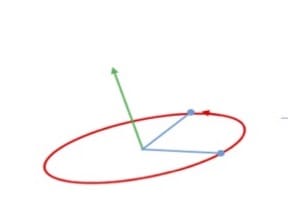Aerospace & Defense
This chassis design provides for: 3 pairs of wheels that are arranged asymmetrically to each other.
The purpose of this design is to create two stages of touching the landing gear with the runway, which should ensure a softer landing of the airliner.
The principle is as follows: first, the 1st and 3rd pair of wheels must touch the ground,
The Rotating-Field Modulated Antenna (RFMA) introduces a novel method for achieving compact and efficient Very Low Frequency (VLF) communication by synthesizing and modulating circulating electromagnetic energy. This solution addresses a long-standing limitation in VLF systems, where conventional antennas must span hundreds to thousands of meters to achieve meaningful radiation efficiency.
ThermoLock™ is a high-performance, passive fireproof coating system engineered to enhance the heat resistance, durability, and survivability of critical assets in aerospace, spaceflight, and defense sectors. Developed by Doctor T Co., Ltd. in Thailand as a proprietary extension of the TPoxy™ platform (currently under IP filing),
The X650 Thermal Drone is a next-generation aerial system built for real-time thermal imaging, inspections, and search missions. Unlike most commercial drones that are locked into proprietary systems, the X650 features a fully modular, open-platform design, supporting third-party thermal cameras, HD video systems, and onboard processing.
The Ballistic Nuclear-Resistant Modular Shield represents a revolutionary advancement in personal protective equipment for modern military forces. Designed to provide comprehensive protection against small arms fire, blast waves, radiation, EMP, and radioactive fallout, this shield combines cutting-edge materials with a highly modular and ergonomic design.
This next-generation shield is constructed from advanced composite materials,
A satellite is a celestial body orbiting along a certain trajectory (orbit) around another object in outer space under the influence of gravity. Small satellites are a type of artificial Earth satellites with low weight and size. Satellites with a mass of less than 0.5– 1 ton are usually considered small.
The following is not in the AI madness stream covering the whole world. It belongs to the traditional, conservative scientific research process related to quantum computing.
As the first AI-enabled picosatellite (PicoSat) constellation platform, IQSat is engineered to facilitate the successful implementation of edge AI in space, with AI processing on the satellite itself, proving the platform’s ability to reduce latency,
Modern weapon systems often suffer from reduced accuracy due to barrel resonance — a condition where vibrations from repeated firing align with the barrel’s natural frequency. This can lead to unwanted oscillations, thermal fatigue, and instability in projectile trajectory. Most existing solutions to this issue are expensive, designed for large-scale systems,
The idea is to make the lower stage rocket and boosters with wings (possibly retractable) and navigation system. When separated, the lower stage rocket and boosters fly and land to the targeted area with autonomous/remote-controlled navigation.
Page 5 of 6










